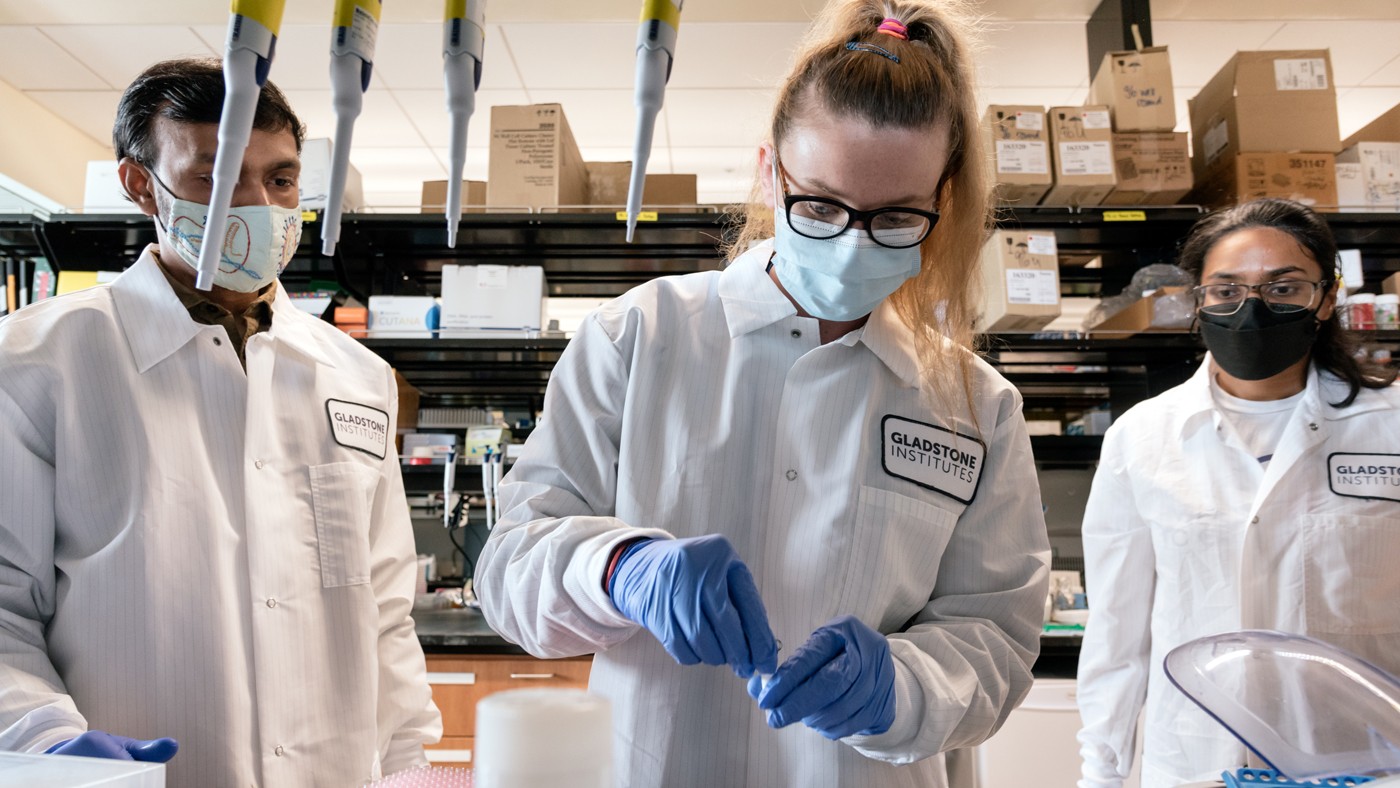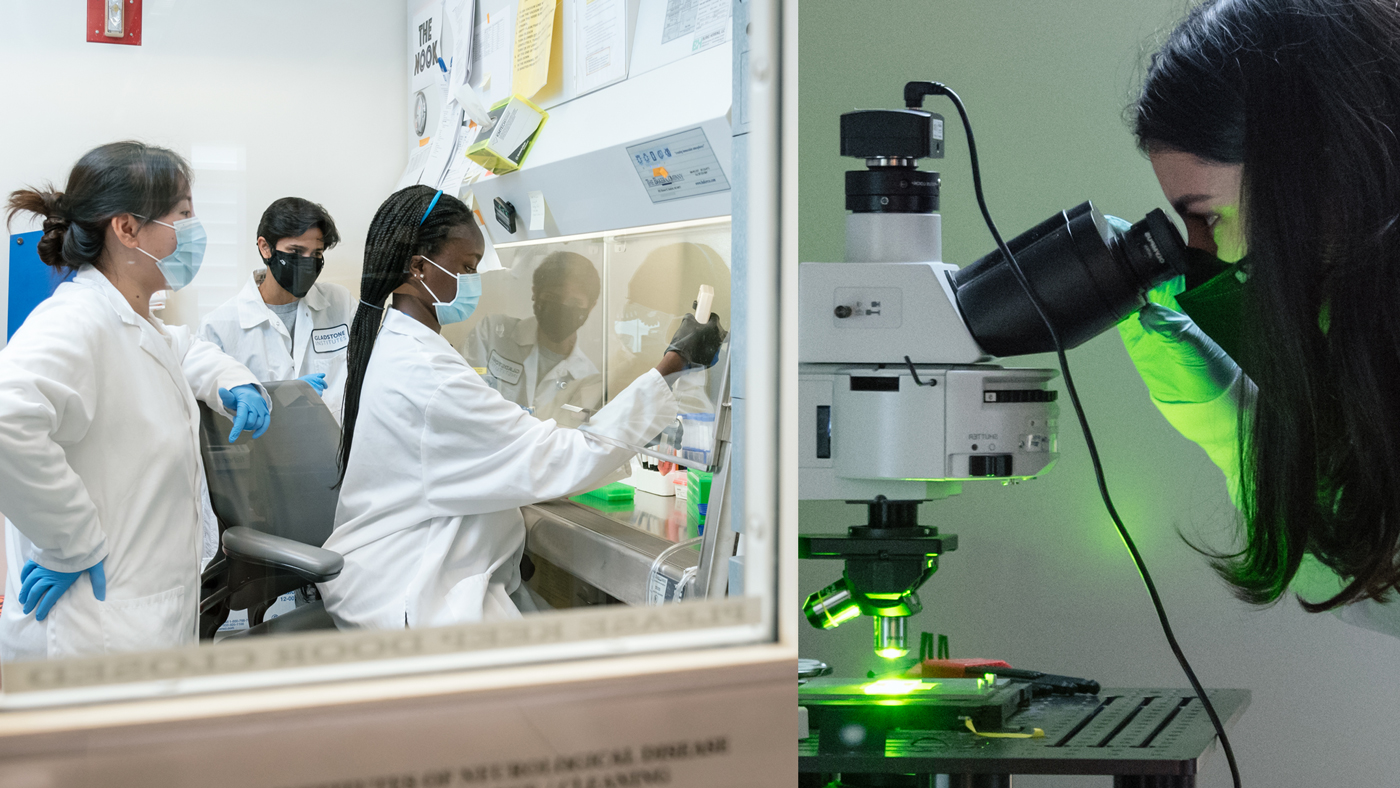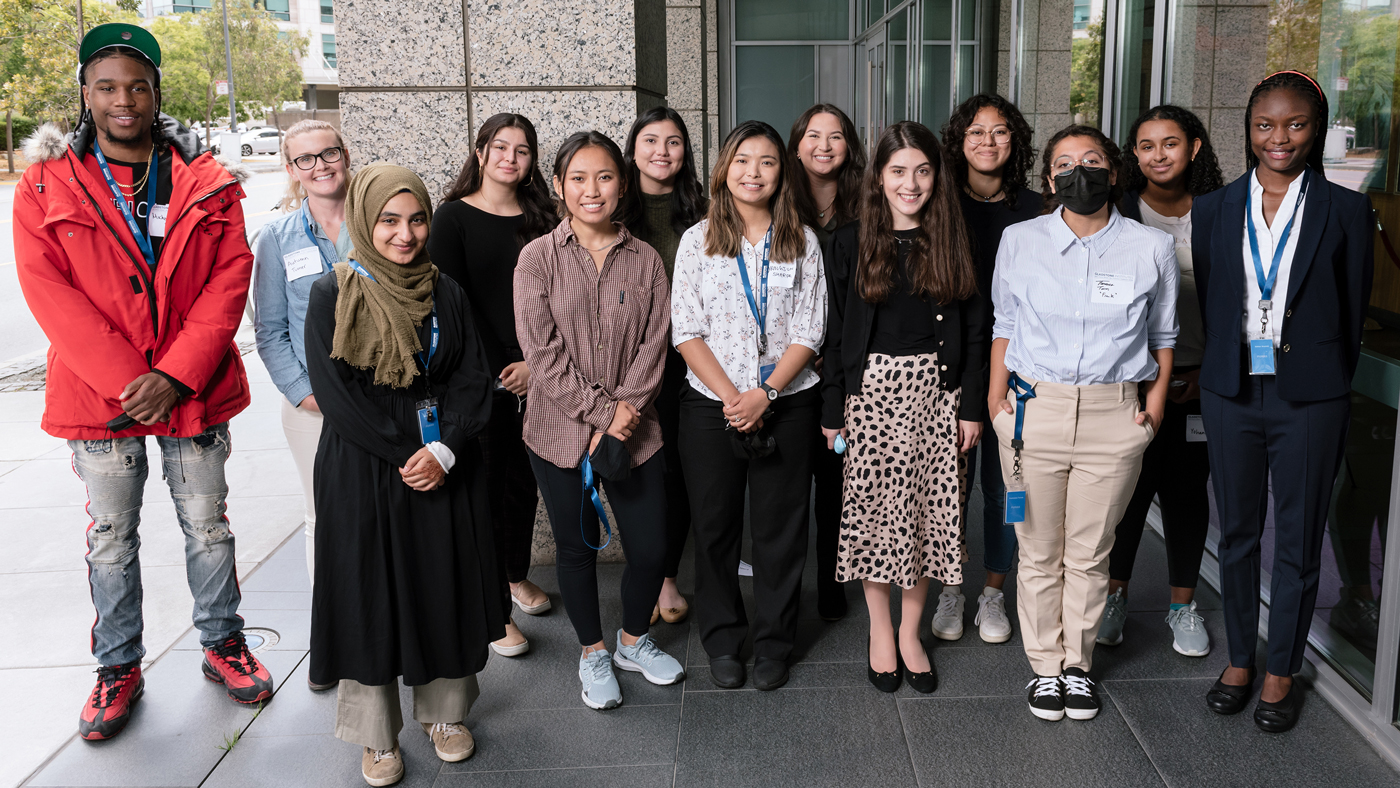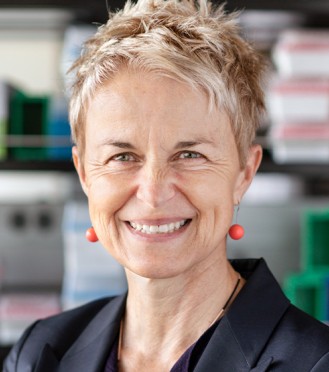Gladstone NOW: The Campaign Join Us on the Journey✕

In the summer of 2021, Gladstone hosted 15 interns—the largest cohort to date.
Brain Circuits Involved in Obsessive-Compulsive Disorder (OCD.) Apolipoprotein E4 and Alzheimer’s Disease. Leveraging Machine Learning to Identify Behavioral Deficits. These were just some of the projects that a group of college students tackled in the summer of 2021 during their internships at Gladstone Institutes.
Each summer, a cohort of students join Gladstone labs as part of the Promoting Underrepresented Minority Advancement in the Sciences (PUMAS) internship program. But with the rapid changes of the COVID-19 pandemic, it wasn’t clear if the PUMAS program was going to happen in 2021.
“We actually had to cancel the internship program in 2020,” says Melanie Ott, MD, PhD, director of the Gladstone Institute of Virology, and founder of the PUMAS program. “The PUMAS program has been such an important part of our diversity, equity, and inclusion efforts at Gladstone. It was important that we find a way to move forward in 2021 and bring in a new group of budding scientists.”
The PUMAS program targets community college students who come from backgrounds that are underrepresented in science, technology, engineering, and medicine (STEM).
Of the 2.1 million students enrolled at community colleges in California, about half are from racial and ethnic groups that have been shown by the National Institutes of Health to be underrepresented in biomedical research (African American, Hispanic, Native American, Alaskan Native, and Pacific Islander).

PUMAS interns work on an independent research project in the lab and attend professional development courses throughout the program.
PUMAS aims to reach students at a critical point in their academic careers, providing them with support, skills, and helping increase their confidence as they get ready to enter a 4-year institution.
The interns spend the summer working on a research project while simultaneously learning the basics of working in the lab—lab etiquette, lab safety, and pipetting—as well as developing their professional skills, networking with junior and senior scientists, and exploring possible career paths in the sciences.
The program typically culminates in an on-site poster session, where each student shares the results of their projects with the broader Gladstone community, their mentors and professors, and their families. Of course in 2021, like many other aspects of the program, the poster session had to take on a new virtual format in light of the COVID-19 pandemic.
Adapting for a Digital World
Thanks to comprehensive COVID-19 protocols, Gladstone labs have been open and running experiments since late 2020. But with an evolving virus and rapidly changing guidance, how to host the interns was still up in the air.
“A big question for us was, are we going to be able to safely have students working in the labs,” says Sudha Krishnamurthy, PhD, director of Postdoctoral and Graduate Student Education and Research Development Affairs at Gladstone. “We were watching the situation very closely. A big part of this program is students gaining hands-on research experience. We wanted to make sure this year’s group could benefit from the same experience.”
Ultimately, Gladstone’s COVID-19 Task Force—a collaborative group of scientists and administrative professionals from across the organization—decided that it was safe to host the interns on-site.
“The Gladstone community really came together in the last 2 years to create a safe environment for all our scientists and staff,” says Krishnamurthy. “Everyone wore masks as needed and followed all the protocols, which allowed our research to continue and scientific discoveries to be made.”
 2021 PUMAS Interns
2021 PUMAS Interns
Still, to maintain a low density of people in the Gladstone building, the PUMAS program was hosted in a hybrid format, with professional development courses being held on Zoom while maintaining in-person lab training.
“Making the PUMAS program hybrid this year actually allowed us to do some stuff we wouldn’t have considered possible in the past,” says Krishnamurthy. “In fact, we were able to host an intern that was located in Texas rather than the San Francisco Bay Area this summer.”
Forming New Collaborations
Now in its eighth year, PUMAS continues to expand. In 2021, Gladstone welcomed 15 interns—the largest cohort to date.
“Every year, we have a lot of interest in the program and we want to accommodate as many students as possible,” says Krishnamurthy. “In 2022, we’re planning to have a similar sized group of students.”
2021 PUMAS Virtual Presentations
Since the launch of PUMAS, 55 interns have completed the program. In order to keep the program growing, Gladstone has formed partnerships to have interns hosted in labs at the Quantitative Biosciences Institute and Bakar ImmunoX at UC San Francisco.
“We hope to continue to grow our partnerships in the future,” says Ott. “I’m excited that other organizations see the value in supporting young scientists and increasing diversity within our labs and within the biomedical research field.”
Apply to PUMAS
Applications for the 2022 PUMAS program are now open. Learn more about eligibility requirements and how to apply.
Congratulations to the 2021 PUMAS Interns
- Esther Anyona, Diablo Valley College (Mentors: Seo Yeon Yoon and Antara Rao, Huang Lab at Gladstone)
- Arianna Barajas, University of San Francisco (Mentors: Amar Nijagal and Claire Levy, Nijagal Lab at ImmunoX UCSF)
- Michael Daniel, UC Berkeley (Mentors: Jane Srivastava and Nandhini Raman, Flow Cytometry Core at Gladstone)
- Yohanna Gebremedhin, UC Davis (Mentor: Abdullah Syed, Doudna Lab at Gladstone)
- Jenny Granera, Centro Educacional Mantica Berio (Mentor: Robyn St. Laurent, Kreitzer Lab at Gladstone)
- Nilufar Kayhani, UC Berkeley (Mentor: Kihyun Lee, Srivastava Lab at Gladstone)
- Heba Morsy, College of San Mateo (Mentors: Robyn Kaake and Kelsey Haas, Krogan Lab at Gladstone)
- Yasmin Palacios-Calderón, City College of San Francisco (Mentor: Trupti Patil, Krogan Lab and Quantitative Biosciences Institute at UCSF)
- Pemba Sherpa, Santa Rosa Junior College (Mentors: Sierra Lear and Rebecca Fang, Shipman Lab at Gladstone)
- Yangjum Sherpa, Santa Rosa Junior College (Mentor: Blaise Ndjamen, Histology and Light Microscopy Core at Gladstone)
- Jessica Solis, Los Medanos College (Mentors: Arnab Ghosh, Genomics CoLabs, and Walter Eckalbar at ImmunoX UCSF
- Francesca Torres, West Valley College (Mentor: Zeynep Cakir, Krogan Lab at Gladstone)
- Autumn Turner-Groth, West Valley College (Mentors: Ujjwal Rathore and Vigneshwari Kumar, Marson Lab at Gladstone)
- Vanessa Usoh, Tarrant County College (Mentors: Stephanie Miller and Patrick Honma, Palop Lab at Gladstone)
Featured Experts
Want to Join the Team?
Our people are our most important asset. We offer a wide array of career opportunities both in our administrative offices and in our labs.
Explore CareersCould This Molecule Be ‘Checkmate’ for Coronaviruses?
Could This Molecule Be ‘Checkmate’ for Coronaviruses?
Scientists develop powerful drug candidates that could head off future coronavirus pandemics.
News Release Research (Publication) COVID-19 Infectious Disease Krogan Lab Ott LabSizing Up the Risk of Bird Flu: Q&A With Gladstone Virologist Melanie Ott
Sizing Up the Risk of Bird Flu: Q&A With Gladstone Virologist Melanie Ott
Avian influenza isn’t going away any time soon. But how serious is its threat to humans and what precautions are necessary?
News Release Infectious Disease Ott LabThe Audacity of Hope: Stories of Resilience and Empowerment | World AIDS Day 2024
The Audacity of Hope: Stories of Resilience and Empowerment | World AIDS Day 2024
Rewatch The Audacity of Hope, a powerful webinar hosted in honor of World AIDS Day 2024.
HIV/AIDS Ott Lab




